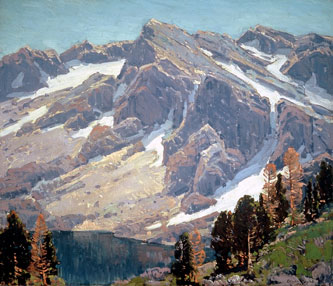California Impressionism: Selections from the Irvine Museum
Artists capture the vivid colors and intense sunshine of California’s majestic landscape in a distinctive style that has come to be called California Impressionism.
The paintings in this exhibition represent a good sampling of the collection of The Irvine Museum, the only museum in California dedicated to the preservation and display of California Impressionism, an art style that flourished from 1890-1930.
The paintings from this beautiful and important regional variant of American Impressionism are principally landscapes that document the splendor of California as it was before huge population growth and mass urbanization.
Impressionism made its debut in Paris in 1874 and its significant contributions to American art were in the use of color and the specialized brushwork. American painters, in general, did not dissolve forms, a common practice of Monet and his followers.
The loose, choppy brushstroke that characterizes Impressionist work was both the consequence of the quick manner of paint application and the desire to produce a brilliant surface covered with a multitude of small daubs of bright color.
The 1890s saw the first evidence of Impressionism in California. In keeping with its techniques, California’s painters preferred to sketch and paint directly out of doors.
Shunning the light of the studio, the new arrivals determined that the best way to paint a landscape was to be in the landscape. Moreover, capturing the delicate and fleeting effect of California’s light necessitated swiftness. As such, the technique of direct and quick application of paint became indispensable and thus a characteristic of this style.
You’re invited to enjoy the remarkable paintings that define California’s great artistic heritage.

